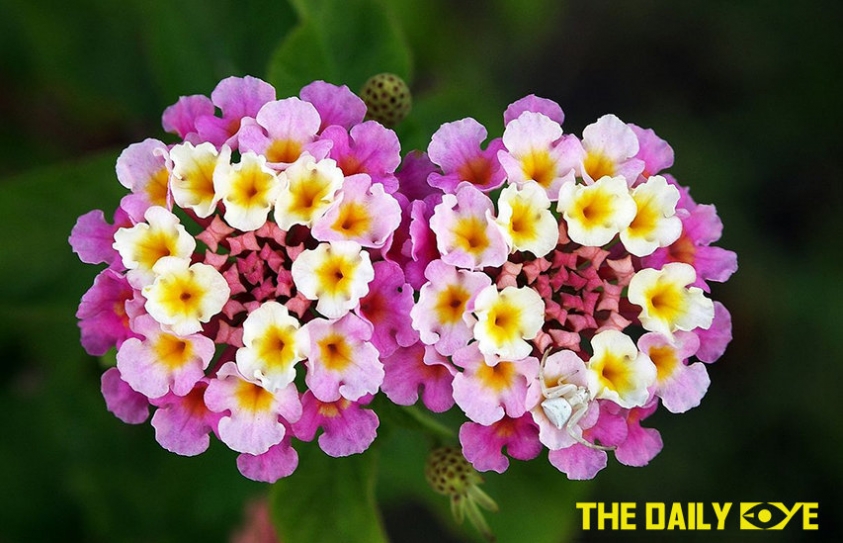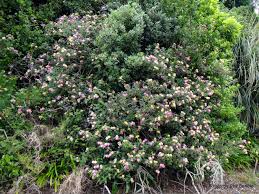
An Antidote for Bandipur
by Revati Tongaonkar August 28 2017, 6:47 pm Estimated Reading Time: 3 mins, 6 secsBandipur National Park in Karnataka is facing a severe crisis today, trying to deal with an invasion by Lantana camara, a flowering shrub that has taken over the forest. Forest officials and local NGOs are working together to tackle the menace.
Bandipur national park is one of the largest patches of green cover in the South, being home to over 40 species of birds, including the Jacobin Cuckoo, Purple-rumped Sunbird and the Fantail Flycatcher has now fallen prey to an unrestrained spread of the shrub. With tiny flowers of pink, yellow and purple, Lantana camara seems benign, but is a rapidly proliferating plant, hindering the growth of native vegetation in the forest, including plants that encompass the diet of herbivores such as deer and elephants. The plant and its fruit is poisonous for the animals, making them seek an alternative means of food, resulting in essentially driving them out of the forest to forage for food in areas of human habitat.

Native to South America, the shrub was brought to India with British officers, perhaps as long as 200 years ago. Kept as an ornamental plant, the fast-growing weed soon became a hazard, and forest officials watched in vain as it slowly took over the forests.
Efforts to contain it have largely gone in vain, although a new tie-up sounds promising. Junglescapes, a Bengaluru-based not-for-profit organisation has taken up the issue, sounding some hope for the jungles. Following a method originally recommended by scientist C. R. Babu at the Centre for Environmental Management of Degraded Ecosystems, the organisation has paired up with villagers from surrounding hamlets to control the plant. The approach involves cutting the plants below the root stem to ensure that it does not grow back. Following this, the area surrounding the plant is seeded with native species of grass and shrubs. Water trenches are then dug up, and water storage structures set up around the spot to abet the regeneration of healthy undergrowth. This passive method has been more successful than a direct plantation of new saplings.
According to Ramesh Venkatraman, managing trustee of the NGO, they have been successful at restoring almost 2,500 acres of affected forestland in the hills surrounding Bandipur till date. Mr Venkatraman, whose organisation won an award for its work from the Society for Ecological Restoration, Washington D.C., says that the return of natural vegetation and relevant diet has been marked with the return of bird and animals. K.N. Mahesha, an ornithologist from Kunagahalli village, who volunteers for Junglescapes, vouches for the fact, saying that elephants used to come to his village in search of food, but with the return of native trees, such incidents have come down.
The Forest Department is working on another method to engage with the overgrowth in Bandipur and Nagarhole National Parks. Lantana Lace, (Teleonemia scrupulosa) a bug that feeds vicariously on the weed, is being used. “A group of entomologists came down to study the Lantana leaves affected by the bug recently and they identified it. Now we are using the bug to carry out biological control of the spread of invasive plants,” says Ambady Madhav, Director of the Bandipur National Park. The bug has been released in the worst-hit areas, such as Hediliaya, Kundkere, Himmavad Gopalaswamy Betta and N. Begur.
The effect of the bug on the plants was noticed when the forest department observed a large-scale drying up of Lantana in some areas of Bandipur, says C. Jayaram, Additional Principal Conservator of Forests (Wildlife). The department then decided to use the bug to eradicate the Lantana menace. Some wildlife activists are skeptical, and worry about the bugs mutating and becoming a greater issue; however, Mr Jayaram believes such fears to be unfounded.




-173X130.jpg)
-173X130.jpg)
-173X130.jpg)
-173X130.jpg)
_(1)-173X130.jpg)

-173X130.jpg)
